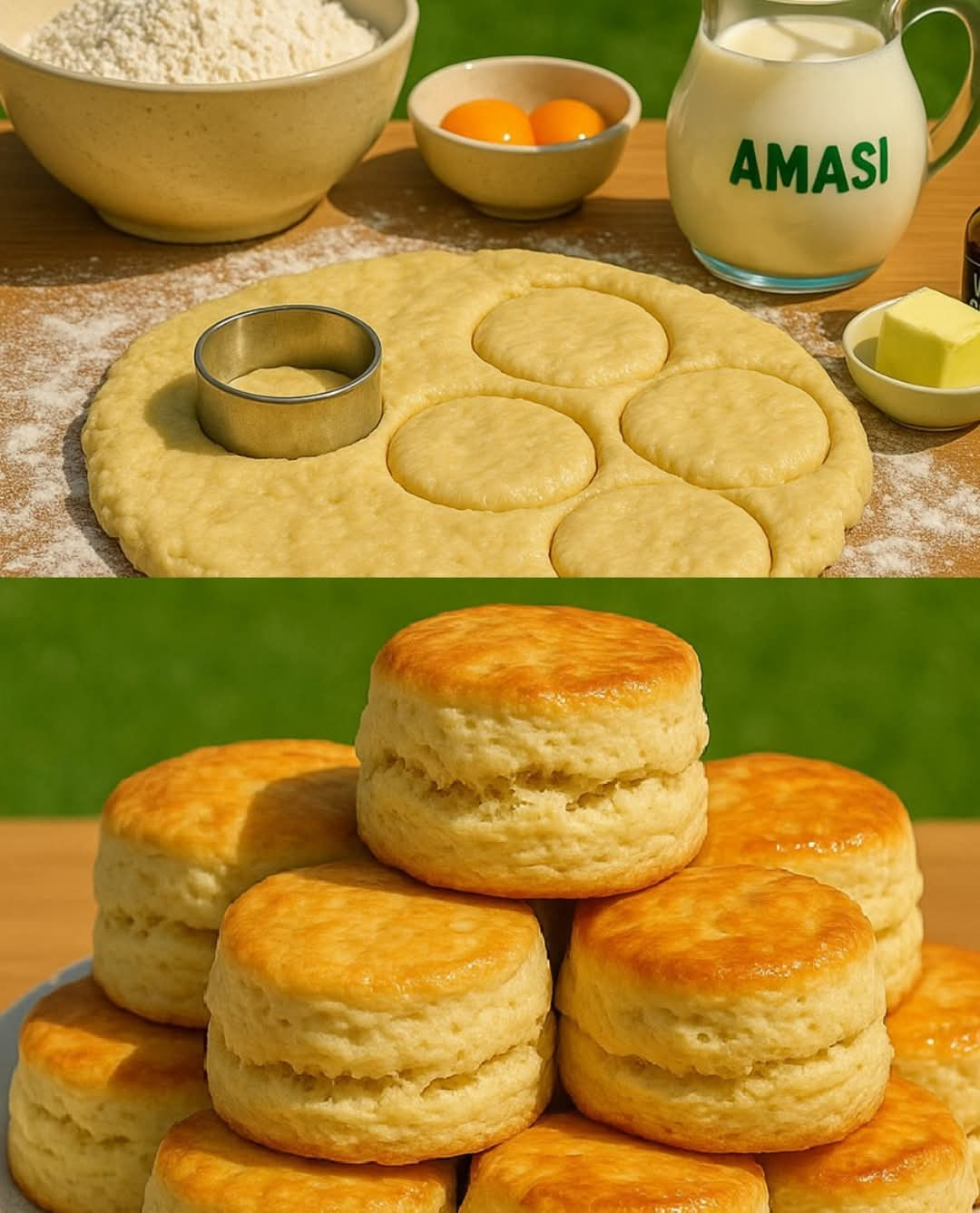Sure! Here’s a comprehensive, heartfelt, and informative guide to making delicious Amasi Scones, perfect for sharing with family, neighbors, or at community gatherings. This version celebrates both tradition and flavor, built from your big batch recipe.
Traditional Amasi Scones Recipe: A Taste of Comfort and Heritage
Introduction
Scones are beloved across many cultures, from English tea-time treats to Southern American biscuits. In Southern Africa, Amasi Scones hold a special place. Rich, tender, and flavorful, these scones are made with amasi—a fermented milk similar to buttermilk—which adds depth, tenderness, and tang to the dough. This recipe is a large-batch version, ideal for big families, community events, school bake sales, or freezing for later enjoyment.
Ingredients
- 8 cups all-purpose flour (sifted)
- 10 teaspoons baking powder
- 1 cup sugar
- 3 large eggs (2 for the dough, 1 for egg wash)
- 2 cups amasi (or cultured buttermilk)
- 500g baking margarine (softened)
- 2 teaspoons vanilla essence
- Pinch of salt (optional but recommended)
Method
Step-by-Step Instructions
- Preheat your oven to 180°C (350°F). Line large baking trays with parchment paper or lightly grease them.
- Prepare dry ingredients: In a very large mixing bowl, sift together the flour, baking powder, salt (if using), and sugar.
- Add margarine: Cut in the baking margarine using your fingers or a pastry cutter until the mixture resembles fine breadcrumbs.
- Whisk wet ingredients: In a separate bowl, whisk together 2 eggs, amasi, and vanilla essence.
- Combine: Pour the wet mixture into the dry ingredients. Mix gently with a wooden spoon or clean hands until a soft dough forms. Do not overmix.
- Shape the dough: Lightly flour your surface. Turn out the dough and gently knead once or twice just to bring it together. Pat or roll it to about 2 cm (3/4 inch) thickness.
- Cut the scones: Use a round cutter or glass dipped in flour to cut out scones. Place on the prepared tray with a little space between them.
- Egg wash: Beat the remaining egg and brush the tops for a golden finish.
- Bake: Bake for 20–25 minutes or until golden brown and risen.
- Cool and serve: Allow to cool slightly on a wire rack. Serve warm with butter, jam, cheese, or plain.
History of Amasi Scones
Amasi scones represent a fusion of British colonial baking traditions and African culinary identity. As baking ingredients like flour and margarine became more accessible in southern Africa, home bakers began experimenting, and amasi—a staple in many households—naturally found its place in scone recipes.
Benefits of Amasi Scones
- Amasi is probiotic, supporting gut health.
- No preservatives—just honest, wholesome ingredients.
- Economical: Perfect for big families or feeding a crowd.
- Customizable: Add raisins, grated cheese, or a dusting of cinnamon sugar.
Formation Tips
- For softer scones: Handle the dough as little as possible.
- Want flaky layers? Fold the dough over itself a few times like puff pastry before cutting.
- Add-ins? Gently fold in dried fruit or herbs after mixing the dough.
Lovers of These Scones
These scones are beloved by:
- Grandmothers who pass on tradition through baking.
- School kids who come home to the smell of freshly baked treats.
- Community bakers who share generously at events.
- Bread-lovers who enjoy a soft, rich alternative to rolls.
Nutritional Overview (per large scone, estimated)
| Nutrient | Approximate Amount |
|---|---|
| Calories | 280–320 kcal |
| Carbohydrates | 35–40g |
| Fat | 12–15g |
| Protein | 5–6g |
| Calcium | High (from amasi) |
| Fiber | 1–2g |
Note: Values will vary depending on exact portion sizes and any added ingredients.
Conclusion
Amasi Scones are more than just a baked good—they are a celebration of home, heart, and heritage. Whether served with tea on a Sunday morning or packed into school lunchboxes, they represent warmth and generosity. This recipe honors tradition and offers nourishment for body and soul.
Would you like a printable version, a smaller batch adaptation, or variations (like cheese scones or raisin-studded ones)?
